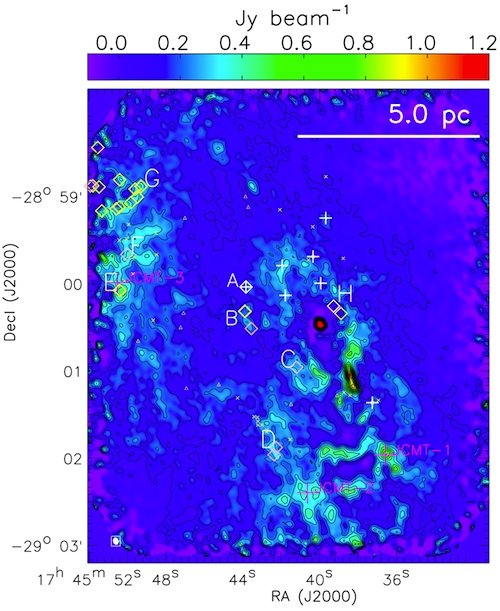|
Home \ Science \ Scientific Highlights
Scientific Highlights with the SMAThe First Interferometric 0.86 mm Dust Continuum Image in the Milky Way CenterHauyu Liu (ASIAA) and collaborators have made the largest ever SMA mosaic observations of the 0.88 mm dust continuum emission around the Milky Way supermassive black hole Sgr A*. This dust image, of which the field of view consists of 157 SMA mosaic pointings, is the first published interferometric image of the submillimeter dust continuum emission in this region. We resolved at least several tens of 10-100 M⊙ dense gas clumps in the 5’ field including the extremely lumpy and asymmetric circumnuclear disk (CND) and the exterior gas arms/streamers. There is a very good agreement between the high-resolution dust continuum map of the CND and all previous molecular line observations. As the dust emission is the most reliable optically thin tracer of the mass, free from most chemical and excitation effects, we demonstrate the reality of the abundant localized structures within the CND, and their connection to external gas structures. From the spectral line data, the velocity dispersions of the dense clumps and their parent molecular clouds are ∼10–20 times higher than their virial velocity dispersions. This supports the idea that the CND and its immediate environment may not be stationary or stable structures. Some of the dense gas clumps are associated with 22 GHz water masers and 36.2 GHz and 44.1 GHz CH3OH masers (diamonds in the figure), which give implications to high-mass star-formation in the Galactic center.
|
>> INTERNAL DOCU | ASIAA




